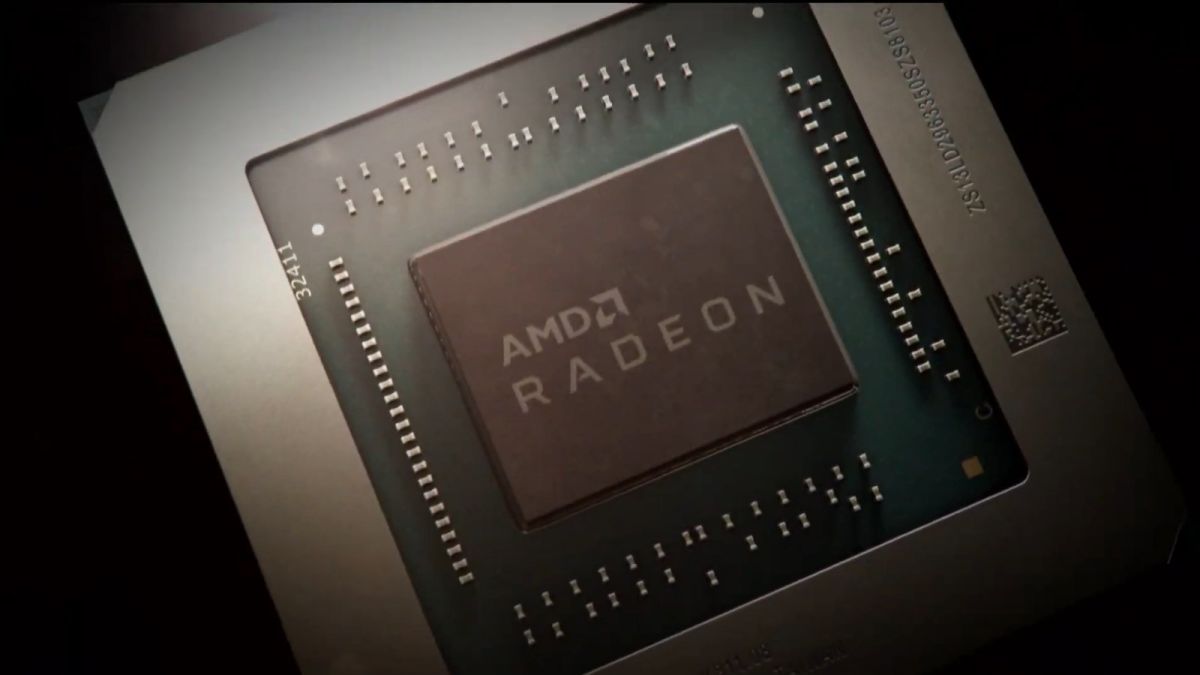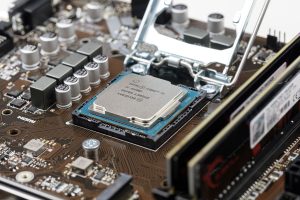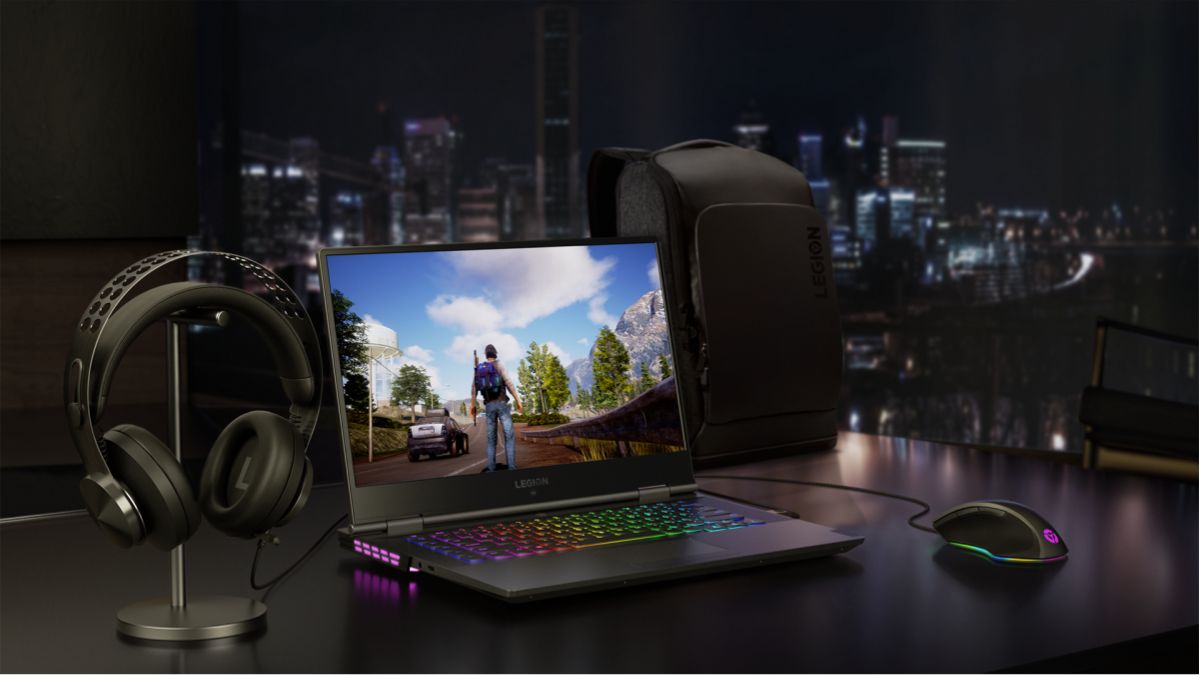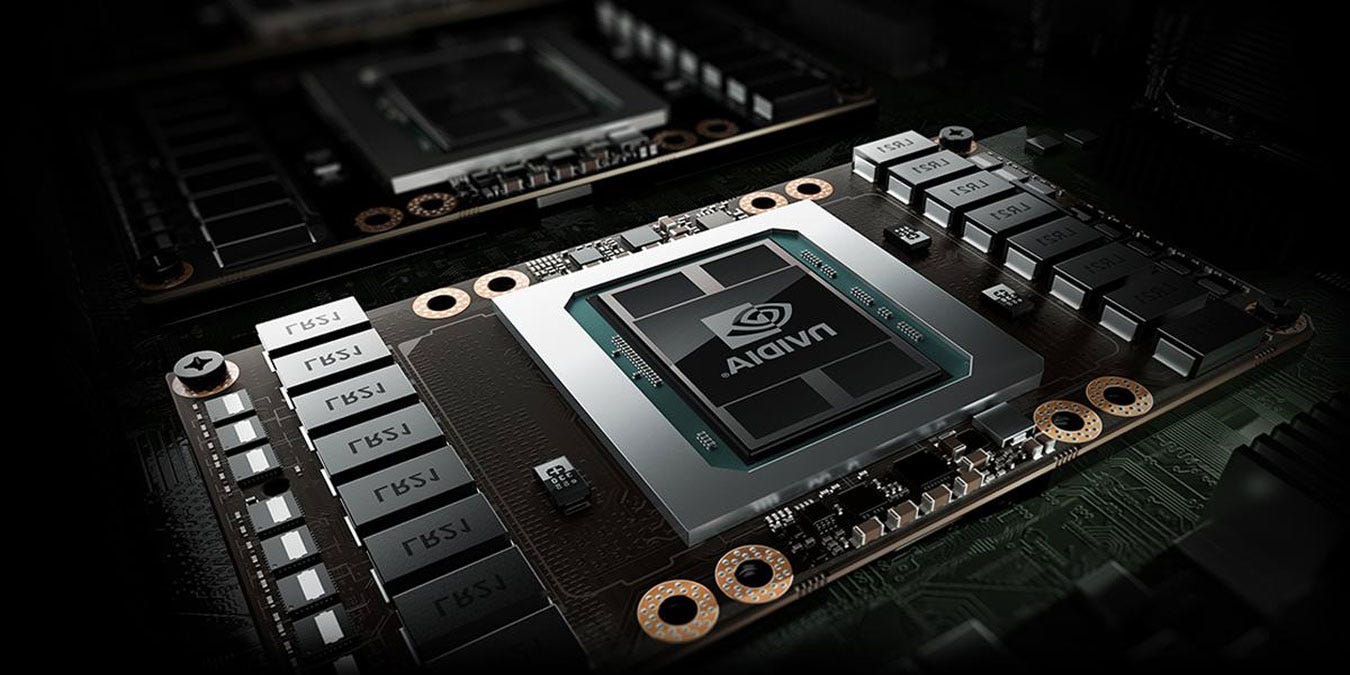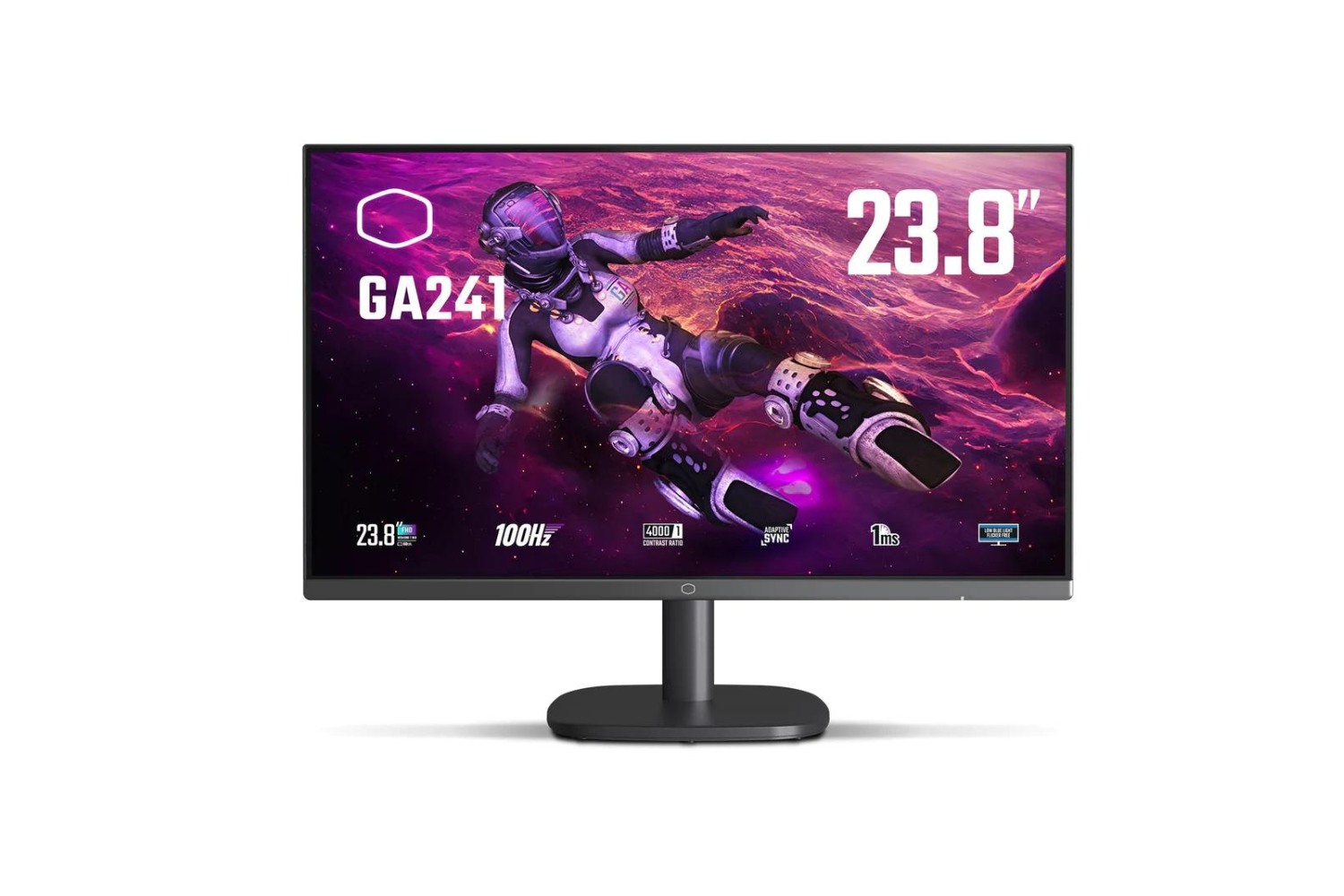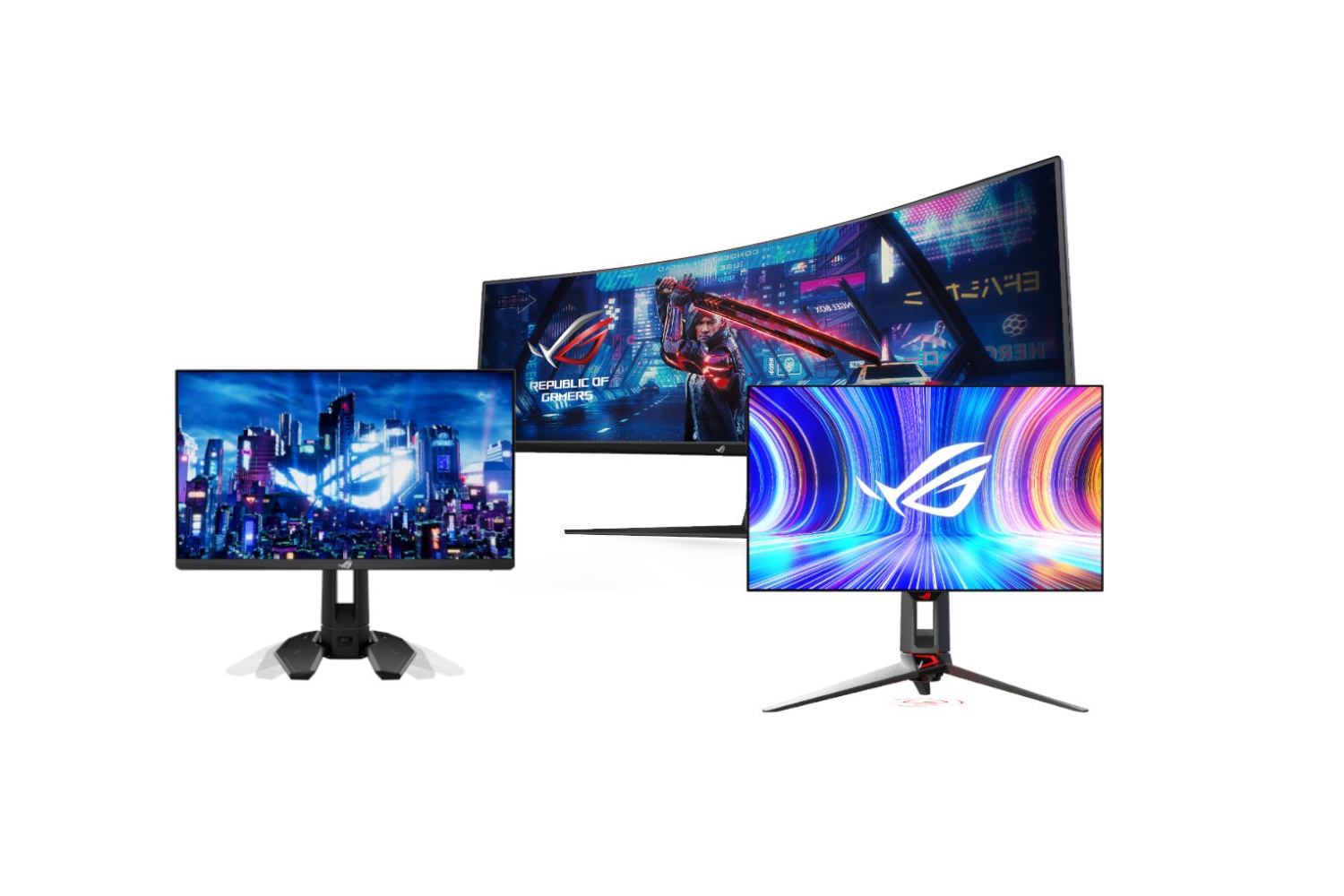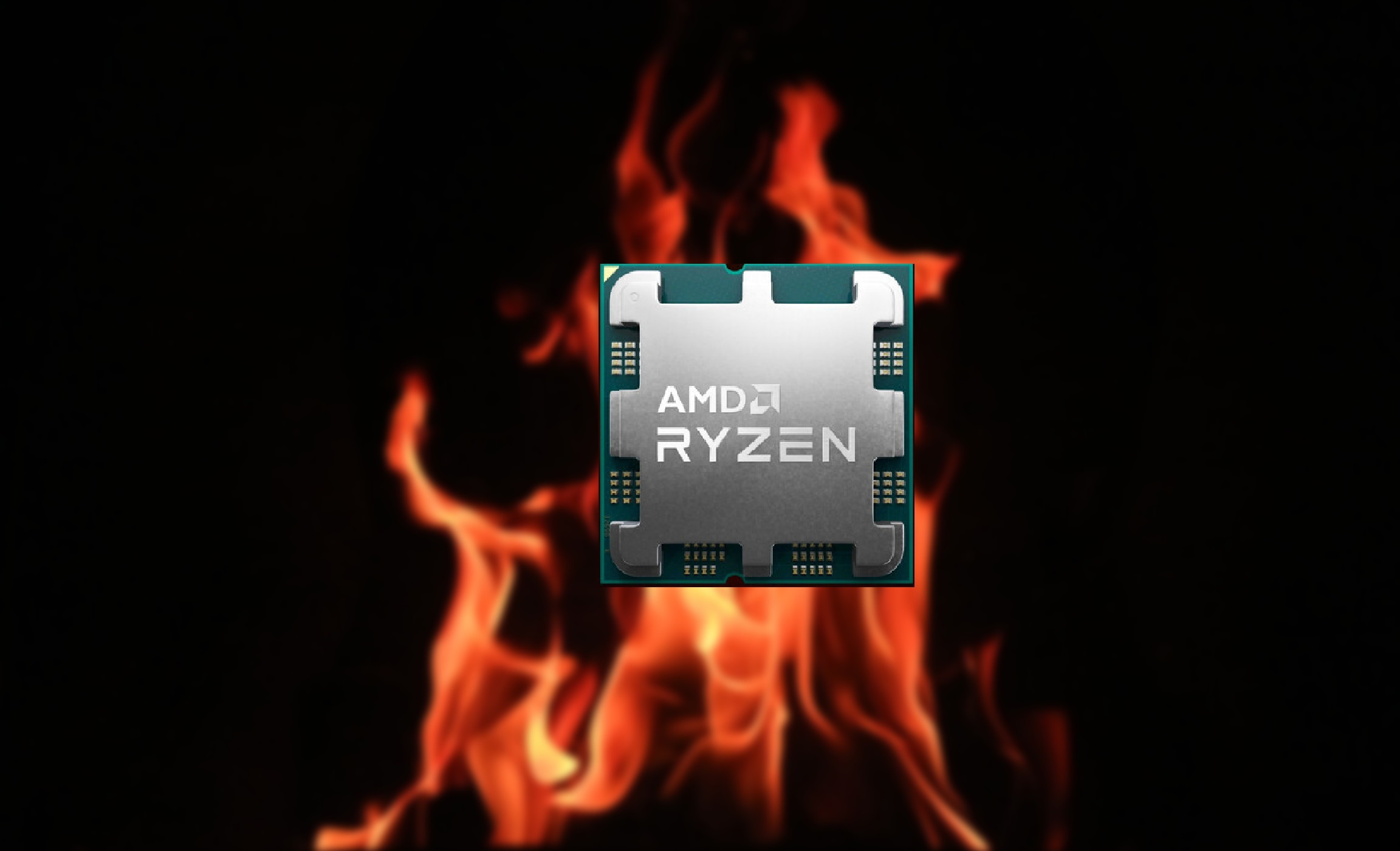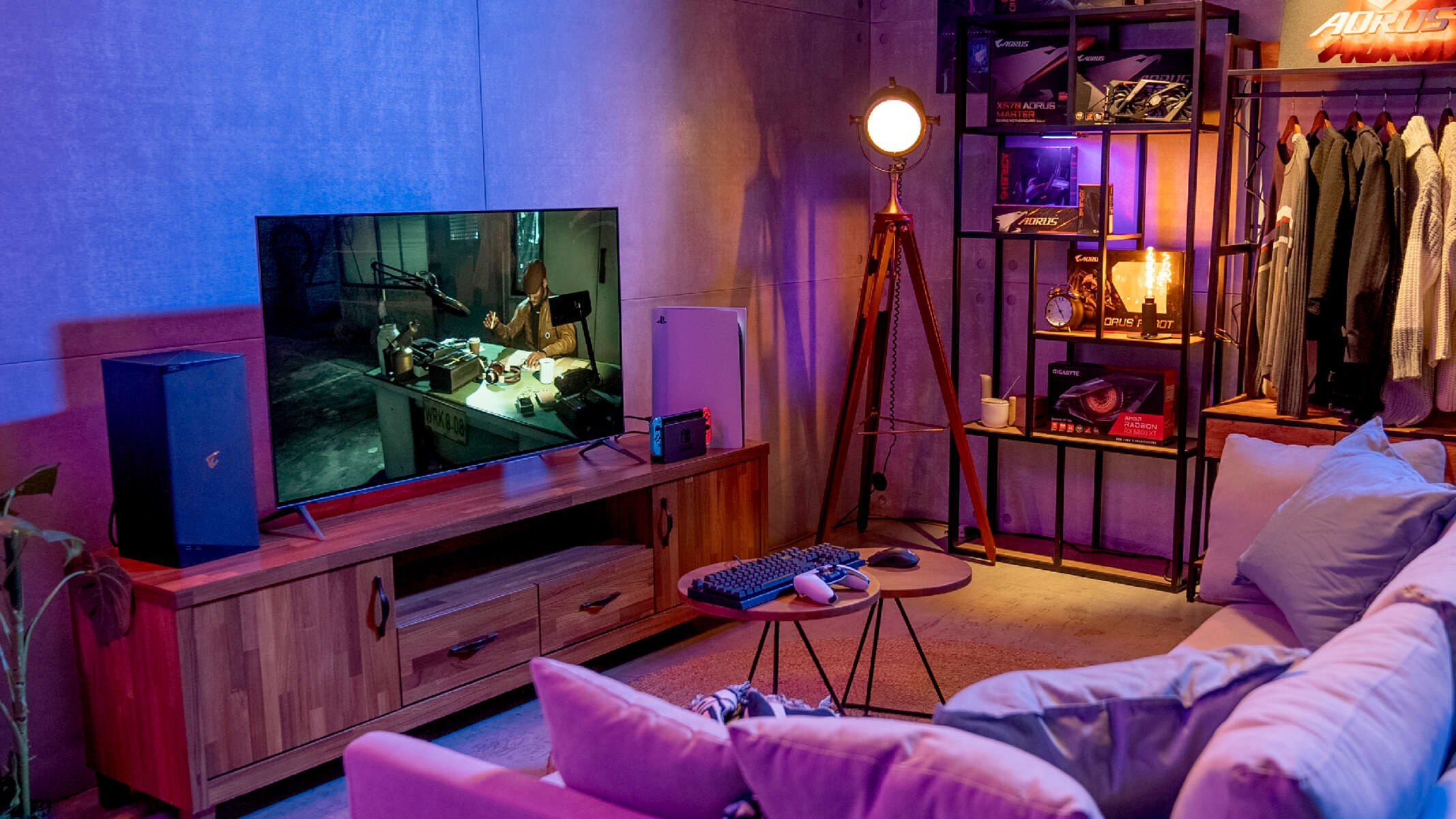Introduction
Welcome to the world of GPU overclocking! If you’re an AMD graphics card user looking to squeeze out some extra performance from your GPU, you’ve come to the right place. GPU overclocking is a technique used to push your graphics card beyond its factory-set limits, allowing it to run at higher speeds and deliver improved performance.
Overclocking your AMD GPU can give you a noticeable boost in gaming performance, enabling you to play the latest AAA titles with higher frame rates and smoother gameplay. However, it’s essential to approach overclocking with caution, as improper overclocking can lead to system instability, crashes, or even permanent damage to your GPU.
In this comprehensive guide, we’ll walk you through the process of overclocking your AMD GPU using AMD Overdrive, a powerful and user-friendly tool that allows you to adjust various GPU settings and squeeze out that extra performance. We’ll cover everything from the basics of GPU overclocking to advanced techniques for fine-tuning your settings.
Before we dive into the process, it’s important to note that overclocking your GPU will generate more heat and increase power consumption. Therefore, it’s crucial to have a well-ventilated system and a reliable power supply to handle the increased load.
Throughout this guide, we’ll also discuss some important precautions to take before overclocking, how to monitor your GPU temperature, stress test for stability, adjust settings, and benchmark your GPU’s performance both before and after overclocking.
So, if you’re ready to unleash the full potential of your AMD GPU and take your gaming experience to the next level, let’s dive into the exciting world of GPU overclocking with AMD Overdrive!
What is GPU overclocking?
GPU overclocking is the process of increasing the clock speed of your graphics processing unit (GPU) beyond its default settings to achieve higher performance. The clock speed refers to the frequency at which the GPU operates, measured in megahertz (MHz) or gigahertz (GHz). By overclocking your GPU, you can achieve a higher FPS (frames per second) and smoother performance in games and other GPU-intensive tasks.
When a graphics card is manufactured, it is designed to operate at a specific clock speed that ensures stability and longevity. However, these default clock speeds are often conservative to accommodate a wide range of system configurations and minimize the risk of crashes or other issues. Overclocking allows you to push your GPU’s clock speed above these default settings, tapping into the untapped potential of your graphics card.
GPU overclocking is primarily achieved by increasing the core clock and the memory clock of the GPU. The core clock determines how fast the GPU’s processor operates, while the memory clock regulates the speed at which the GPU accesses its own memory. By adjusting these clock speeds, you can speed up the processing and memory functions, resulting in improved performance.
It’s important to note that not all GPUs are created equal and will have different overclocking capabilities. Some GPUs may overclock higher and provide more significant performance gains, while others may have more limited overclocking potential. Additionally, the cooling solution on your graphics card, such as the fan or heatsink, plays a crucial role in maintaining temperature and stability during overclocking.
While overclocking can offer substantial performance improvements, it also carries some risks. Overclocking generates more heat, so it’s crucial to monitor the temperature of your GPU and ensure it remains within safe limits. Additionally, overclocking may void your GPU’s warranty, so it’s essential to understand the risks involved and proceed with caution.
In the next section, we’ll explore why you should consider overclocking your AMD GPU, examining the benefits it can bring to your gaming and computing experience.
Why should you consider overclocking your AMD GPU?
Overclocking your AMD GPU can bring several benefits and advantages to your gaming and computing experience. Here are some compelling reasons why you should consider overclocking your AMD GPU:
- Improved Gaming Performance: One of the primary reasons to overclock your GPU is to get a noticeable boost in gaming performance. By increasing the clock speeds of your GPU, you can achieve higher frame rates and smoother gameplay, allowing you to enjoy the latest games with enhanced visuals and responsiveness.
- Maximize Your Investment: Overclocking your AMD GPU allows you to squeeze out more performance from your graphics card without having to spend additional money on a new GPU. It’s a cost-effective way to maximize the value of your existing hardware.
- Future-Proofing: As new games and applications become more demanding, overclocking your GPU can help ensure that your system remains capable of running the latest software smoothly. It helps to future-proof your setup and prolong the lifespan of your GPU.
- Customization and Personalization: Overclocking gives you the flexibility to tailor your GPU’s performance to your specific needs and preferences. You can fine-tune the clock speeds and optimize the settings to achieve the perfect balance between performance and stability.
- Competitive Advantage: If you’re an avid gamer or someone who competes in eSports tournaments, overclocking your AMD GPU can give you a competitive edge. By achieving higher frame rates and faster rendering times, you can react quicker and gain an advantage over your opponents.
- Learn and Explore: Overclocking your GPU is not only about performance gains but also about learning and exploring the capabilities of your hardware. It allows you to delve into the technical side of your graphics card, understand its architecture, and experiment with different settings.
It’s important to note that while overclocking can provide significant benefits, it also comes with some caveats. Overclocking generates more heat and can potentially cause instability or system crashes if not done properly. Therefore, it’s crucial to follow the recommended guidelines, monitor your GPU’s temperature, and thoroughly test the stability of your overclocked settings.
In the next section, we’ll discuss the precautions you should take before diving into the overclocking process to ensure a safe and successful experience.
Precautions before overclocking
Before you embark on the exciting journey of overclocking your AMD GPU, it’s important to take certain precautions to ensure a safe and successful overclocking experience. Here are some essential steps to consider before diving into the overclocking process:
- Research and Educate Yourself: Take the time to research and understand the fundamentals of GPU overclocking. Familiarize yourself with the capabilities and limitations of your specific AMD GPU model. Read guides, watch tutorials, and join forums to gain insights from experienced overclockers.
- Ensure Sufficient Cooling: Overclocking generates more heat, which can potentially lead to thermal throttling, instability, or even hardware damage. Before overclocking, make sure your GPU has adequate cooling. Clean the dust from your fans or heatsinks and consider installing additional cooling solutions if needed.
- Update Drivers and BIOS: Ensure that you’re running the latest GPU drivers and the most recent BIOS version for your AMD GPU. Manufacturers often release updates that optimize performance and stability, so keeping your drivers and firmware up to date is important for a smooth overclocking experience.
- Monitor GPU Temperatures: Overclocking increases your GPU’s temperature. To avoid overheating, use monitoring software to keep track of your GPU’s temperature during overclocking sessions. Ensure that the temperatures stay within safe limits to prevent thermal issues or performance degradation.
- Backup Data: Overclocking can sometimes lead to system instability, which may result in data loss or corruption. Before starting the overclocking process, ensure that you have a backup of your important files and documents. This will help prevent any potential data loss in case of system crashes or other issues.
- Start with Conservatively: When beginning your overclocking journey, it’s wise to start with conservative settings. Gradually increase the clock speeds in small increments and test for stability after each adjustment. This approach allows you to find the sweet spot where your GPU performs optimally without pushing it too far right from the start.
- Be Patient and Persistent: Overclocking is a process that requires patience and persistence. It may take several iterations of trial and error to find the optimal settings for your GPU. Don’t get discouraged if your initial attempts are not successful. Learn from your mistakes, make incremental adjustments, and refine your overclocking settings over time.
By following these precautions, you can minimize the risks associated with overclocking and increase the chances of a successful and safe overclocking experience. In the next section, we’ll dive into the step-by-step process of overclocking your AMD GPU using the AMD Overdrive tool.
Step-by-step guide to overclock AMD GPU using AMD Overdrive
AMD Overdrive is a feature-rich tool provided by AMD that allows you to overclock your AMD GPU and fine-tune various settings for optimal performance. Follow these step-by-step instructions to overclock your AMD GPU using AMD Overdrive:
- Download AMD Overdrive: Visit the official AMD website and download the latest version of AMD Overdrive for your operating system.
- Install AMD Overdrive: Run the downloaded installation file and follow the on-screen instructions to install AMD Overdrive on your system. Ensure that you have administrative privileges.
- Open AMD Overdrive: Once the installation is complete, launch AMD Overdrive from the desktop shortcut or by searching for it in the Start menu.
- Accept Terms and Conditions: Upon opening AMD Overdrive for the first time, you may be prompted to accept the terms and conditions of the software. Read through the terms and conditions and click on the “Accept” button to proceed.
- Select Your GPU: AMD Overdrive will automatically detect your AMD GPU. Select the appropriate GPU from the drop-down menu if you have multiple AMD GPUs installed in your system.
- Enable Overclocking: On the main AMD Overdrive interface, click on the “Enable” button to enable overclocking for your GPU. This will allow you to adjust the clock speeds and other settings.
- Adjust Core Clock Speed: In the AMD Overdrive interface, locate the “Core Clock” slider. Increase the core clock speed by moving the slider to the right in small increments (e.g., +10 MHz). Each adjustment should be followed by stability testing.
- Adjust Memory Clock Speed: Locate the “Memory Clock” slider in the AMD Overdrive interface. Similar to the core clock, increase the memory clock speed in small increments and test for stability after each adjustment.
- Stress Test and Monitor: After each adjustment, it’s crucial to stress test your GPU using a benchmarking tool or a demanding game to ensure stability. Monitor the GPU temperature during stress testing to avoid overheating.
- Repeat and Fine-tune: To achieve the optimal overclocking settings, repeat the process of adjusting the core clock and memory clock speeds, stress testing, and monitoring the temperature. Make gradual adjustments and find the highest stable clock speeds for your GPU.
- Note and Save Settings: Once you have found the stable overclocking settings, take note of the final clock speeds and other settings. Save the settings if the AMD Overdrive tool provides an option to save a profile.
It’s important to keep in mind that every GPU is unique, and there is no one-size-fits-all overclocking configuration. The optimal overclocking settings will vary depending on your specific AMD GPU model, cooling solution, and other factors. Experimentation, testing, and monitoring are key to finding the best overclocking settings for your system.
In the following sections, we’ll cover how to check and monitor your GPU temperature, stress test for stability, adjust and fine-tune your GPU overclock settings, and benchmark and compare performance before and after overclocking.
Checking and monitoring your GPU temperature
Monitoring your GPU temperature is vital when overclocking, as it helps ensure that your graphics card stays within safe operating limits and prevents potential thermal throttling or damage. Here are some essential steps to check and monitor your GPU temperature:
- Use GPU Monitoring Software: Install a reliable GPU monitoring software such as MSI Afterburner, HWMonitor, or GPU-Z. These programs provide real-time temperature readings and other valuable information about your GPU.
- Launch Monitoring Software: Open the GPU monitoring software of your choice after installation. It should display various details about your graphics card, including the temperature readings.
- Monitor Idle Temperature: Take note of the temperature reading when your GPU is at idle or under light load. This will give you a baseline reference for comparison when the GPU is under heavy load after overclocking.
- Stress Test and Monitor: When overclocking your GPU, use a stress testing tool or run a demanding game for an extended period to put your graphics card under heavy load. Monitor the temperature readings closely during this time.
- Watch for Temperature Spikes: During the stress testing or gaming session, keep an eye on the temperature readings for any sudden spikes or consistent high temperatures. If the temperature reaches unsafe levels, it may indicate that your overclocking settings are too aggressive, and adjustments are necessary.
- Ensure Adequate Cooling: If you observe high temperatures, ensure that your GPU cooling system is functioning correctly. Clean any dust from fans or heatsinks, ensure proper airflow within your system, and consider additional cooling solutions such as case fans or a CPU cooler.
- Monitor VRM and Memory Temps: Some GPU monitoring software allows you to track the temperature of other components on your graphics card, such as the VRM (Voltage Regulator Module) and memory chips. Monitoring these temperatures can provide a comprehensive understanding of your GPU’s thermal performance.
- Consider Custom Fan Curves: Many GPU monitoring programs allow you to customize fan curves, which dictate fan speed based on temperature. Adjusting the fan curve can help maintain lower temperatures during overclocking by increasing fan speed at specific temperature thresholds.
- Record and Review Results: Keep a record of the temperature readings during overclocking and stress testing. Reviewing the results can help you identify any patterns or issues and determine if further adjustments to your overclocking settings are necessary.
Remember, maintaining safe temperatures is crucial for the longevity and stability of your GPU. Strive to keep your GPU temperature within recommended limits, typically below 80-85 degrees Celsius. If your GPU consistently exceeds these temperatures, it may be necessary to adjust your overclocking settings to ensure better thermal performance.
In the next section, we’ll discuss stress testing and stability checking, crucial steps in the GPU overclocking process.
Stress testing and stability checking
Stress testing and stability checking are integral steps in the GPU overclocking process. They help ensure that your AMD GPU can handle the increased clock speeds and other settings without encountering stability issues or crashes. Here are the key steps to effectively stress test and check the stability of your overclocked GPU:
- Choose a Reliable Stress Testing Tool: Select a trusted stress testing software designed specifically for GPUs. Popular options include FurMark, 3DMark, Unigine Heaven, and MSI Kombustor. These tools put your GPU under heavy load to simulate demanding gaming or rendering scenarios.
- Set Up the Test Environment: Close other unnecessary applications and ensure that your system is running at optimal conditions during the stress testing process. This minimizes potential interference and provides accurate results.
- Configure Stress Test Settings: Follow the guidelines provided by the stress testing software to configure the appropriate settings for the test. This may include adjusting the resolution, enabling specific effects, or selecting the desired stress level.
- Run the Stress Test: Start the stress testing process and observe how your GPU handles the heavy load. Pay attention to any visual artifacts, screen tearing, or system crashes that may occur during the stress test.
- Monitor GPU Temperatures: Continuously monitor your GPU temperatures during the stress test using a reliable monitoring software. Keep an eye on the temperature readings to ensure they stay within safe limits and do not reach critical levels.
- Observe for Stability Issues: Alongside temperature monitoring, watch out for stability issues during the stress test. Stability issues may manifest as visual anomalies, driver crashes, or system freezes. If such issues occur, it indicates that your overclocked settings may be too aggressive and need adjustments.
- Test for an Adequate Duration: Make sure to run the stress test for a sufficient amount of time to thoroughly evaluate the stability of your overclocked GPU. A duration of at least 30 minutes is recommended to identify any potential long-term stability problems.
- Make Incremental Adjustments: If stability issues are detected during stress testing, return to the AMD Overdrive tool and make incremental adjustments to your overclocking settings. Make small adjustments to clock speeds or voltages and retest for stability.
- Repeat the Stress Testing Process: After making adjustments, run the stress test again to verify the stability of your new overclocking settings. Continue this iterative process of adjustment and testing until you achieve a stable configuration.
- Document the Final Stable Settings: Once you have successfully completed the stress testing process and achieved stable overclocking settings, document the final values of your core clock, memory clock, and other relevant settings. This will serve as a reference for future use.
Remember, stress testing and stability checking are crucial steps to ensure the reliability and durability of your overclocked GPU. It’s important to prioritize stability over extreme performance gains to prevent system crashes, data loss, or hardware damage.
In the next section, we’ll discuss how to adjust and fine-tune your GPU overclock settings to achieve the optimal balance of performance and stability.
Adjusting and fine-tuning your GPU overclock settings
Once you have successfully stress tested your AMD GPU and achieved a stable configuration, it’s time to adjust and fine-tune your overclock settings to optimize performance and ensure long-term stability. Here are the key steps to effectively adjust and fine-tune your GPU overclock settings:
- Incremental Adjustments: Start by making small, incremental adjustments to your core clock and memory clock speeds. Increase them by a small amount, such as 10 MHz, and test for stability after each adjustment.
- Stress Test at Each Adjustment: After making adjustments, perform another round of stress testing to validate the stability of your new settings. Monitor GPU temperature and check for any signs of instability or artifacts during the test.
- Watch for Temperature and Voltage: Pay close attention to GPU temperature and voltage readings during stress testing and general usage. Ensure that the GPU temperature remains within safe limits and that the voltage doesn’t exceed the recommended range for your graphics card.
- Adjust Memory Timing: In addition to adjusting clock speeds, you can also experiment with memory timings to achieve better performance. However, be cautious when changing memory timings, as incorrect values can cause instability. Consult online resources or forums for guidance on safe memory timing adjustments for your specific AMD GPU model.
- Monitor Performance and Stability: While fine-tuning your overclock settings, keep a close eye on both performance and stability. Run benchmarking tests or engage in resource-intensive activities to assess performance gains, and make sure that system stability is not compromised in the process.
- Take Breaks and Observe Long-Term Stability: Overclocking is a gradual process that requires patience. After making adjustments, give your GPU some time to run under different workloads and observe its long-term stability. It’s important to ensure that your overclocked settings remain stable over extended periods of use.
- Document and Save Stable Settings: Once you achieve a stable and fine-tuned overclock configuration, document all your final settings, including core clock, memory clock, voltage, and any other relevant adjustments. Save these settings either within the AMD Overdrive software or as a separate profile for easy restoration in case of system resets or updates.
- Regularly Monitor and Maintain: After fine-tuning your GPU overclock settings, continue to monitor GPU temperature and overall system stability during regular usage. Regular maintenance, such as cleaning dust from fans and maintaining an optimal airflow within your system, is also important to sustain optimal performance.
Remember, fine-tuning your overclock settings is an iterative process that requires careful observation and consideration. Gradual adjustments, stress testing, and keeping track of system stability will help you find the optimal balance between performance gains and long-term stability.
In the next section, we’ll discuss the importance of benchmarking and comparing performance before and after overclocking your AMD GPU.
Benchmarking and comparing performance before and after overclocking
Benchmarking your AMD GPU before and after overclocking is a crucial step to objectively measure the performance improvements achieved through the overclocking process. By conducting benchmarks and comparing the results, you can gain valuable insights into the effectiveness of your overclock settings. Here are the key steps to effectively benchmark and compare performance:
- Select Benchmarking Software: Choose a reputable benchmarking software that provides accurate and reliable performance measurements specific to GPUs. Popular benchmarking tools include 3DMark, Unigine Heaven, FurMark, and Superposition. Ensure that the selected benchmark is suitable for the type of applications or games you intend to use your GPU for.
- Run Pre-Overclock Benchmarks: Before applying any overclocking settings, run multiple benchmark tests using the chosen software. Take note of the obtained scores and other relevant metrics, such as FPS (frames per second) and overall performance indicators for future comparison.
- Adjust and Fine-Tune Overclock Settings: After completing the initial benchmarks, apply your overclocking settings using the AMD Overdrive tool. Make sure to follow the adjustment and fine-tuning steps outlined earlier in this guide.
- Run Post-Overclock Benchmarks: Once you have applied your overclock settings, rerun the same benchmarks that you performed initially. Ensure that the test conditions are unchanged and comparable to those of the pre-overclock benchmarks.
- Compare Benchmark Results: Analyze the benchmark results obtained before and after overclocking. Compare the scores, FPS, and other performance metrics to assess the effectiveness of your overclocking efforts.
- Identify Performance Improvements: Look for noticeable improvements in benchmark scores and FPS values between the pre-overclock and post-overclock test results. Higher scores and increased FPS indicate that your GPU is performing better and delivering improved gaming or computing performance.
- Consider Other Factors: While benchmark results provide valuable insights, it’s important to consider other factors that may impact real-world performance. Factors like CPU performance, system RAM, game optimization, or software limitations can influence the overall experience, so it’s essential to consider the benchmark results in conjunction with your specific usage scenario.
- Fine-Tune Further (if necessary): If the benchmark results are not as expected or stability issues arise during the benchmarks, return to the fine-tuning process mentioned earlier. Make incremental adjustments to your overclock settings and retest performance until you achieve the desired balance of performance and stability.
- Record and Compare Results: Document the benchmark results, both pre- and post-overclock, for future reference. This way, you can easily assess the performance gains achieved from overclocking your AMD GPU and track any changes made over time.
Benchmarking and comparing performance provides a quantitative evaluation of your overclocking efforts and serves as concrete evidence of the benefits you’ve obtained. By analyzing the benchmark results, you can make informed decisions on whether to further optimize your overclocking settings or maintain the current configuration.
In the next section, we’ll discuss common issues and errors that you may encounter during the GPU overclocking process and provide troubleshooting tips to help resolve them.
Troubleshooting common issues and errors
During the GPU overclocking process, you may encounter some common issues or errors that can hinder your progress. It’s important to be aware of these issues and have troubleshooting strategies in place to address them effectively. Here are some common problems you may encounter while overclocking your AMD GPU and potential solutions:
- System Instability: If your system becomes unstable or crashes after applying overclocking settings, it could indicate that the settings are too aggressive. Reduce the core clock and memory clock speeds to more conservative levels and retest for stability.
- Visual Artifacts: Visual artifacts, such as flickering pixels or screen tearing, can be a sign of unstable overclocking settings. Reduce the core clock or memory clock speeds slightly and retest to eliminate the artifacts.
- Driver Crashes: If your GPU driver crashes during gaming or stress testing, it may indicate an issue with your overclock settings or an incompatibility between the overclock and the driver version. Try updating your graphics driver or adjust the overclock settings to more stable levels.
- Excessive Heat: If your GPU temperature reaches unsafe levels, it can lead to thermal throttling or stability issues. Ensure that there is adequate cooling in your system, clean fans or heatsinks, and adjust fan curves to enhance the cooling performance.
- System Power Issues: Overclocking may increase power consumption, causing your system to experience instability or power-related errors. Ensure that your power supply unit (PSU) has sufficient wattage to handle the increased load and consider upgrading if necessary.
- Incompatibility with Games or Applications: Some games or applications may not work well with certain overclocking settings due to their specific requirements or optimizations. If you encounter crashes or stability issues while running specific software, try adjusting the overclock settings or revert to default settings for that particular application.
- Inability to Boot: In rare cases, applying aggressive overclock settings may render your system unable to boot properly. If this happens, restart your system and boot into the BIOS or UEFI settings. Reset your BIOS/UEFI to its default settings, which will revert your GPU overclock to default values.
- Driver or Software Compatibility Issues: Some driver or software versions may have compatibility issues with certain overclocking tools or settings. Ensure that you have the latest GPU drivers installed, and if problems persist, try using different overclocking software or adjusting the settings in the current software.
- System Restarts or BSOD: System restarts or “blue screen of death” (BSOD) errors can occur if your overclock settings are too aggressive or unstable. Reduce the core clock or memory clock speeds gradually until stability is achieved.
- Unresponsive Overclocking Software: If the overclocking software becomes unresponsive or freezes, close the software and restart it. If the issue persists, consider reinstalling the software or using an alternative overclocking tool.
When troubleshooting, it’s crucial to make gradual and small adjustments to your overclocking settings. Monitor the results after each adjustment, and keep notes to track any changes made. Patience and careful observation will help you identify the cause of the issue and find the appropriate solution.
In the next section, we’ll wrap up the guide with a brief recap of the key points and the importance of responsible overclocking.
Conclusion
GPU overclocking with AMD Overdrive can be an exciting and rewarding endeavor, allowing you to unleash the full potential of your AMD GPU and achieve enhanced gaming and computing performance. Throughout this guide, we explored the process of GPU overclocking, from understanding the basics to adjusting and fine-tuning your overclock settings.
We discussed the importance of taking precautions before overclocking, including research, ensuring adequate cooling, and monitoring GPU temperature. Stress testing and stability checking were emphasized as vital steps to validate the stability of your overclocked settings.
Benchmarking and comparing performance before and after overclocking provided a quantitative measure of the improvements achieved. Troubleshooting common issues and errors enabled you to address potential obstacles and overcome challenges during the overclocking process.
It’s important to note that overclocking your GPU comes with risks. Overclocking may increase heat generation, power consumption, and stress on your components. It’s crucial to monitor temperatures, ensure proper cooling, and remain within safe limits. Additionally, be aware that overclocking may void your GPU’s warranty, so proceed with caution and understand the potential consequences.
By responsibly overclocking your AMD GPU, you can unlock additional performance and elevate your gaming and computing experience. Remember to make gradual adjustments, stress test your settings, and monitor system stability. Documenting your final stable settings and regularly maintaining your GPU will help sustain optimal performance over time.
Now that you have the knowledge and understanding to embark on your overclocking journey, it’s time to take the leap. Enjoy the benefits of increased performance, improved gaming experiences, and the satisfaction of pushing your AMD GPU to its limits!







